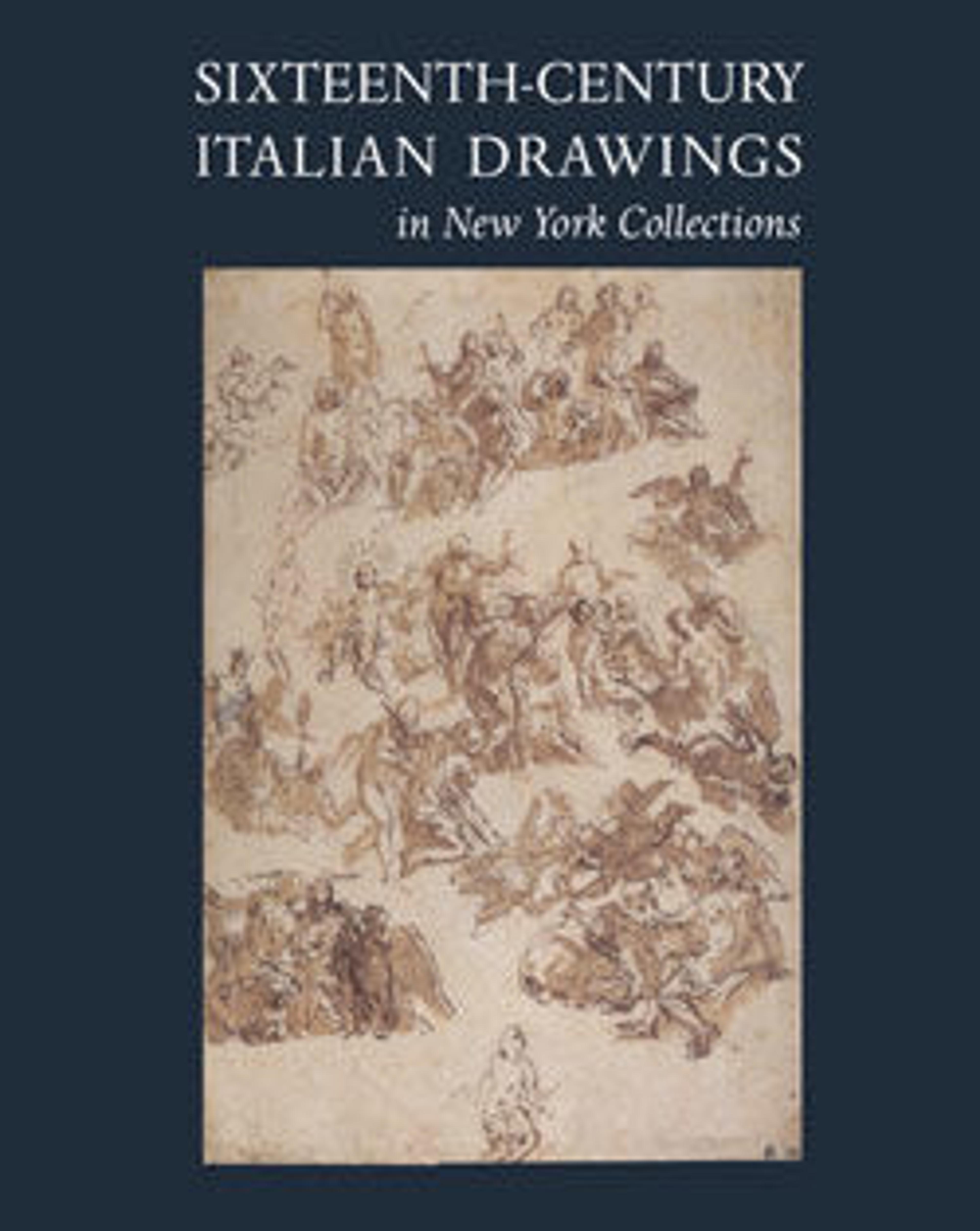The Martyrdom of Saint Lawrence
This large, carefully squared composition by the son of the more famous Lombard painter Bernardino Luini served as a working modello for a fresco that was originally in the church of San Vincenzo alle Monache, Milan (now Pinacoteca del Castello Sforzesco, Milan). The commission is unrecorded, but stylistic comparison to other altarpieces by the artist suggests a date in the 1580s. The drawing retains a freshness of gesture and a lively rhythm of outline that seem lacking in the admittedly very damaged final fresco. Both the stark frontal foreshortening of the figure of Saint Lawrence and the diagonal thrust of the composition were inspired by Titian's famous canvas of the same subject, painted in 1548-57 (Church of the Gesuati, Venice), which became widely known through a number of painted replicas and Cornelis Cort's reproductive engraving.
(Carmen C. Bambach)
(Carmen C. Bambach)
Artwork Details
- Title:The Martyrdom of Saint Lawrence
- Artist:Aurelio Luini (Italian, Luino or Milan ca. 1530–1593 Milan)
- Date:1580s–early 1590s
- Medium:Pen and brown ink, brush and brown wash, highlighted with white gouache, over black chalk, on light tan paper; squared in red chalk
- Dimensions:16-9/16 x 11-7/16 in. (42.0 x 29.0 cm)
- Classification:Drawings
- Credit Line:Harry G. Sperling Fund, 1985
- Object Number:1986.16
- Curatorial Department: Drawings and Prints
More Artwork
Research Resources
The Met provides unparalleled resources for research and welcomes an international community of students and scholars. The Met's Open Access API is where creators and researchers can connect to the The Met collection. Open Access data and public domain images are available for unrestricted commercial and noncommercial use without permission or fee.
To request images under copyright and other restrictions, please use this Image Request form.
Feedback
We continue to research and examine historical and cultural context for objects in The Met collection. If you have comments or questions about this object record, please contact us using the form below. The Museum looks forward to receiving your comments.
